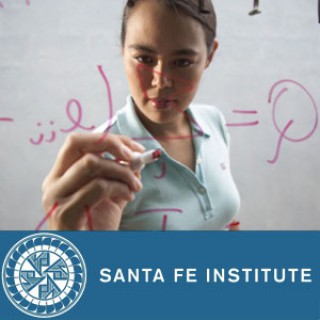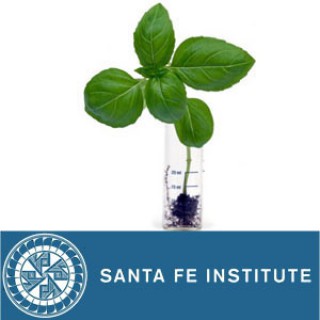
Seminars - Video
Follow Seminars - VideoConnecting to Apple Music.
- Mar 31, 2011 LATEST EPISODE
- infrequent NEW EPISODES
- 1h 7m AVG DURATION
- 10 EPISODES
More podcasts from Santa Fe Institute
Latest episodes from Seminars - Video

The study of coupled human-natural systems has been among the increased focus of scientific investigation for the last decade. Whilst many of the theoretical foundations in the study of complexity in such systems exist for a while, our empirical evidence-based inference reveals more insights into the challenges and opportunities for deeper understanding of the complexity in the coupled systemic interactions. Going beyond simple inferences, such understanding leads us to explore collective pathways of complex group decision-making and the navigation across multi-dynamic and multi-scale landscapes of interactions integrating ecosystem-based considerations to social, cultural and economic social emergence. The presentation will focus on how strengthening collective knowledge flows and interactions related to knowledge acquisition, representation and diffusion provides insight into self-organization, enhancing adaptive capacity, and promotes sustainability and resiliency in such coupled systems. It would also argue that unlike traditional ecological resilience theory, social and thus coupled-systems resilience presents a certain degree of ergodic systemic properties, and has a fundamental probabilistic rather than deterministic character in its spatial and temporal transitions and transformations.

Spacetime Could Be Simultaneously Continuous and Discrete in the Same Way that Information Can Be
There are competing schools of thought about the question of whether spacetime is fundamentally continuous or discrete. Here, we consider the possibility that spacetime could be simultaneously continuous and discrete, in the same mathematical way that information can be simultaneously continuous and discrete. The equivalence of continuous information and discrete information, which is of key importance in signal processing, is established by the Shannon sampling theory: for any band-limited signal, it suffices to record discrete samples to be able to perfectly reconstruct it everywhere, if the samples are taken at a rate of at least twice the band limit. Physical fields on generic curved spaces obey a sampling theorem if they possess an ultraviolet cutoff. Recently, methods of spectral geometry have been employed to show that also the very shape of a curved space (i.e. of a Riemannian manifold) can be discretely sampled and then reconstructed up to the cutoff scale.

Cellular automata (CA) were initially conceived as a formal model to study self-replication in artificial systems. Although self-replication in natural systems is characterized by exponential population increase until exhaustion of resources, after more than fifty years of research, no CA-based self-replicator has come close to exhibiting such rapid population growth. We believe this is due to an intrinsic limitation of CA's, namely, the inability to model extended structures held together by bonds and subject to diffusion. To address this shortcoming, we introduce a model of parallel distributed spatial computation which is highly expressive, infinitely scalable, and asynchronous. We then use this model to define a series of self-replicating machines. These machines assemble copies of themselves from components supplied by diffusion and increase in number exponentially until the supply of components is exhausted. Because they are both programmable constructors for a class of machines, and self-descriptions, we call these machines reified quines.

Our new book, "Loving and Hating Mathematics," is about the emotional, social and political aspects of mathematical life. A major chapter tells of mathematical communities, such as Gottingen in the early 20th century, Bourbaki in Paris, and the Courant Institute in New York. The creation of such a productive community often depends on the leadership and vision of a vital, charismatic figure How the community continues and endures depends on how its members internalize and develop that vision.

We investigate the neural mechanisms underlying decision-making by conducting electrophysiological recordings in awake monkeys while they perform a motion discrimination task

Proponents of nuclear power say that it is the only real alternative to coal-fired power plants if CO2 emissions are to be greatly reduced because wind and solar are too intermittent and unreliable. But massive alteration of the Earth’s climate and making plutonium in costly boilers called reactors turbines are not the only alternatives.

This talk is an overview of my work as a graduate fellow at the Santa Fe Institute on different aspects of the statics and dynamics of the mutual fund industry.

Calculating Chiefs: Simulating Leadership, Violence, and Warfare in Oceania
Today, the reconstruction of the organismal evolutionary tree is basedmainly on molecular sequence data. However, sequence data are sometimes insufficient to reliably resolve in particular deep branches.

Much of ergodic theory deals with deterministic dynamical systems, whereas this talk deals with stochastic systems.

















